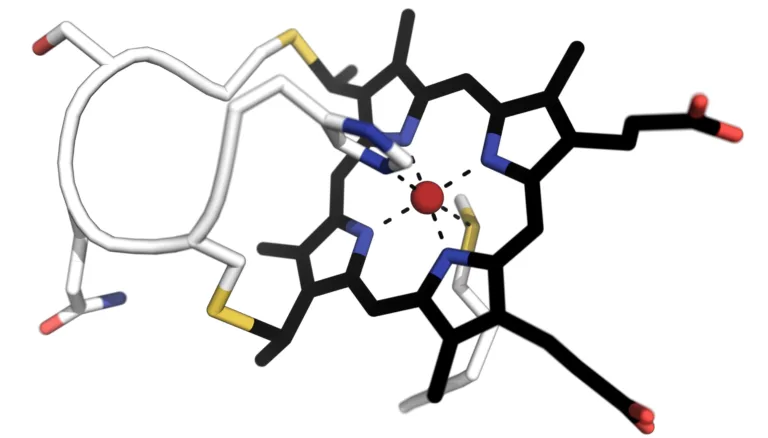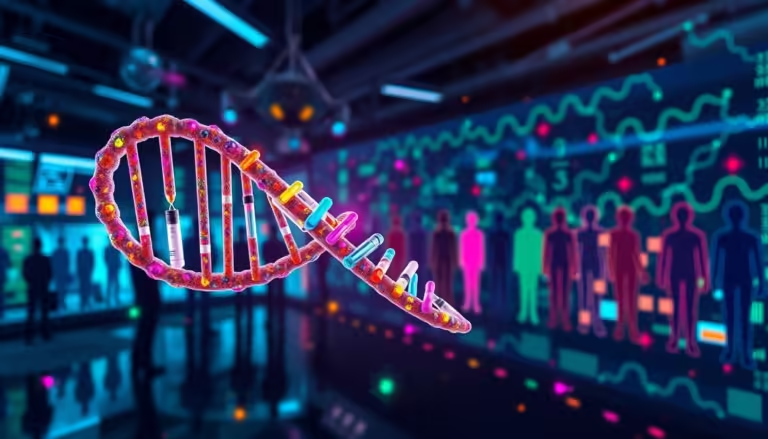Did you know that in hospitalized patients, adverse drug reactions can total up to 1200-1205 cases, as stated by a meta-analysis of prospective studies1? This revelation underscores the imperative for a deeper comprehension of how pharmaceuticals interact with our physiology. The amalgamation of gut health and pharmacogenomics (PGx) serves as a key frontier in this quest.
In the last decade, intense scrutiny has pivoted towards the human microbiome, emphasizing the gut microbiota’s significant sway over drug metabolism and efficacy. This microorganism-rich community within our intestines orchestrates substantial facets of drug response and performance through modulating drug absorption mechanisms and neutralizing toxic compounds.
Pharmacogenomics, a field examining the interplay between an individual’s genetic blueprint and drug reactions, illuminates pathways to personalized medicine. Synthesizing knowledge from PGx and the microbiome enables healthcare practitioners to more accurately foretell and alleviate adverse drug responses, thus customizing treatment schemes based on each person’s distinct genetic and microbial constitution. As an illustration, the Clinical Pharmacogenetics Implementation Consortium (CPIC) advocates for tailoring atomoxetine treatment utilizing Cytochrome P450 (CYP)2D6 genetic insights, which bolsters therapeutic success2.
The intertwining of genetic and microbial variances plays a crucial part in the realm of personalized medicine, particularly concerning drug metabolism and patient safeguarding. This interaction necessitates a more profound exploration into how our genetic architecture and gut flora interdependently modulate medication responses. Ultimately, enhancing therapeutic effectiveness and ensuring patient well-being are the principal goals.

With the continuum of research and progress within PGx and microbiome investigations, we edge closer to a paradigm of health interventions custom-fitted to every person’s genetic and microbial constitution. This approach promises superior health outcomes and diminishes health risks.
The Role of Gut Microbiota in Drug Metabolism
The gut microbiota plays a pivotal role in drug metabolism, often dictating the effectiveness and safety of various pharmaceuticals. An in-depth understanding of how gut bacteria impact xenobiotic metabolism and the bioavailability of drugs can significantly improve therapeutic outcomes. This knowledge also empowers the customization of medical treatments.
Gut Bacteria and Xenobiotic Metabolism
Gut bacteria engage in the metabolic processing of xenobiotics, altering the fate of pharmaceuticals within the body. Such modifications, induced by the microbial community, can either enhance or diminish the therapeutic actions of drugs. The mechanism involves a complex series of enzyme-mediated steps, as elucidated by Turnbaugh P.J. and Haiser H.J., shining light on the multitude of pathways that participate in drug biotransformation. This intricacy profoundly impacts the efficiency and safety measures of medication used.
Impact on Drug Bioavailability
Drug bioavailability represents the fraction of an administered drug that enters systemic circulation and shows its intended effects. The gut microbiota wields a direct influence on drug bioavailability by modulating drug concentrations through metabolic transformations. It has been established through research that specific bacterial strains can modulate drug absorption rates, thereby directly affecting their bioavailability. This insight leads to the possibility of predicting and enhancing drug availability by considering the composition and function of the gut microbiota.
Furthermore, the role of gut microbiota gains critical importance in the context of adverse drug reactions among hospitalized patients, as highlighted by the incidence of around 1200-1205 such cases1. These observations underscore the pivotal role of gut bacteria in drug-related research and therapeutic practices.
Pharmacogenomics and Its Relevance to Drug Response
Pharmacogenomics delves into how an individual’s genetic constitution dictates their reaction to pharmaceuticals, a cornerstone of tailored healthcare. This field elucidates the variance in responses, striving to amplify drug effectivity and safety through bespoke treatment regimens. By aligning drug choices with an individual’s genetic blueprint, pharmacogenomics seeks to mitigate adverse reactions.
Genetic Variability Among Individuals
Individuals exhibit marked variability in their response to pharmaceuticals due to genetic diversity. The landmark Human Genome Project unearthed approximately seven million genetic alterations that influence drug processing and outcomes3. Insights from Whirl-Carrillo et al.’s work in 2012 emphasize the indispensable nature of pharmacogenomics for personalized medicine4. Wright and colleagues’ analysis in 2016 accentuated the extensive protein-coding pharmacogenomic divergence, highlighting the global diversity in drug responses4.
Applications in Personalized Medicine
Pharmacogenomics is pivotal in laying down the principles of precision medicine by allowing healthcare practitioners to tailor interventions to each person’s genetic map. Notably, the RIGHT Study integrates genetic drug reactions into medical records, facilitating proactive genetic-based medication adjustments3. The eMERGE-PGx project is instrumental in advocating for preemptive pharmacogenomics to refine treatment strategies4. Initiatives like IGNITE play a prominent role in the adoption of genomic medicine, further strengthening pharmacogenomics’ position in personalized healthcare4. Consequently, these precision medicine endeavors are propounded to enhance patient outcomes and curtail adverse drug events.
Interaction Between Gut Microbiome and Pharmacogenomics
The interplay between the gut microbiome and pharmacogenomics introduces a complex layer to our understanding of drug reactions and effectiveness. This interconnection is particularly noteworthy due to the microbiota’s ability to alter gene expression and produce various metabolites. To fully grasp the realm of pharmacogenomics, a detailed examination of these mechanisms is imperative.
Microbial Influence on Gene Expression
The gut microbiome exerts a significant influence on gene expression, thus affecting pharmacogenomics. Studies have shown that the microbial community residing in the gut can modify the coexpression networks of the host’s peripheral blood genes. This alteration impacts response to treatments in individuals suffering from severe depressive episodes2. Akkermansia spp., a specific microbial species, demonstrates the ability to enhance glucose regulation, particularly evident with treatments like metformin5. Such discoveries underline the intimate connection between microbial flora and gene expression, subsequently influencing the efficacy and safety of drug regimens.
Microbial Metabolites Affecting Drug Efficacy
Microbial metabolites are critical in adjusting the effectiveness of drugs. Take butyrate, a short-chain fatty acid produced in the intestines, for example. It enhances the body’s responsiveness to insulin and boosts energy usage. These effects can alter the performance of several medications5. Furthermore, studies highlight that certain metabolites offer metabolic advantages by triggering neural circuits connecting the gut and brain, ultimately affecting drug efficacy5. The interaction between these metabolites and drugs like voriconazole in individuals with fast metabolism of CYP2C196 indicates the need for tailored therapeutic strategies.
Considering these findings, the gut microbiome’s impact via gene expression and metabolites heralds a new era in personalized medicine. This study field suggests a potential paradigm shift, aiming to enhance drug outcomes and safety by customizing treatments according to an individual’s microbial and genetic composition.
PGx and the Microbiome: Case Studies and Real-World Implications
The fusion of pharmacogenomics (PGx) and the gut microbiome offers profound implications for personalized medicine. A seminal study examined genetic diversity across 82 pharmacogenes within the Emerge Network. It showcased the impact of genetic variation on drug response, emphasizing the requirement for tailored medical approaches7.
Preemptive pharmacogenomic testing has identified actionable genotypes in over 10,000 patients, affirming the practicality of personalized health care7. These findings have driven the update of pharmacogenetics guidelines, illustrating the translation of research into clinical practice7. Moreover, in practice, pharmacogenomics consultation services have facilitated drug dosing personalization. This ensured more effective therapies, underlining the clinical value of tailored medicine7.
Case studies have shed light on the gut microbiome’s role in drug response. For example, in the metabolism of drugs like irinotecan, the gut microbiota, and the UGT1A1 genotype are pivotal7. Furthermore, the use of alternative splicing as a biomarker holds promise in customizing drug treatments7.
Extensive research has solidified the link between microbial metabolites and drug outcomes. The nexus between drug metabolism enzymes such as Cytochrome P450 and gut microbiota underscores the microbiome’s importance in drug response7. Notably, methylation pharmacogenetics, particularly those affected by the gut microbiome, offer insights for enhancing drug therapies’ efficacy7.
The influence of PGx and the microbiome spans various populations. In Southeast Asians, for example, rare CYP2C9 variants have a sizeable effect on drug metabolism. This highlights the urgent need for population-specific pharmacogenomic strategies7. Similarly, designing pharmacogenomic profiles that account for individual genetic and microbiome characteristics ensures the precision and efficacy of treatment plans7.
The use of prescription drugs among children and adolescents in the U.S. grew by 5% from 1999 to 2014, with current use at 11%8. Notably, the incidence of adverse reactions remains high, underscoring the vital role of personalized medicine integrated with PGx and microbiome data8. In British Columbia, Canada, 15% of pregnant women were using prescription drugs, indicating a need for more focused therapeutic interventions8.
Real-world examples highlight the transformative potential of PGx and microbiome integration in healthcare. This symbiosis among genetics, microbial ecology, and personalized medicine is shaping the therapeutic future, ushering in tailored and effective treatment modalities.
Techniques for Analyzing Gut Microbiome’s Impact on Drug Response
Recent strides in analyzing techniques have had a transformative effect on our grasp of the gut microbiome and its impact on drug response. Tools such as metagenomic sequencing and metabolomics/metabonomics stand out in their ability to decode microbial diversity and metabolic functions. They cast a wide net over the interplay of microorganisms with medicine.9
Metagenomic Sequencing
Metagenomic sequencing unlocks the door to the intricate genetic makeup of the gut’s microorganisms. It unveils the genetic underpinning of drug metabolism and resistance, painting a detailed picture of the microbiome’s interactions with drugs. Through sequencing microbial genomes in their entirety, researchers dive deep into genetic nuances and the gut’s adaptive strategies9.
Metabolomics and Metabonomics
Augmenting metagenomic sequencing, metabolomics and metabonomics focus on the products of cellular activities. These are key for probing the gut microbiome‘s effects on pharmaceuticals. By scrutinizing metabolite patterns, scientists unearth how these microbial byproducts sway drug efficacy and safety. Studies in metabolomics shine a light on the intricate dance between microbes and their human hosts, informing the field of tailored medicine.
The integration of deep learning has markedly enhanced the efficacy of pharmaceutical research and development, fueled by the inclusion of genetic insights. This synergy sharpens the precision of analyzing techniques9. Moreover, the advent of tools like DeepBind has shown exceptional aptitude in sifting through vast data pools. They are instrumental in pinpointing crucial mutations that interfere with protein bindings in conditions such as familial hypercholesterolemia and ovarian cancer9. These developments in metagenomic sequencing and metabolomics/metabonomics herald a new era in genomic medicine. They empower us to delve deeper into the roles of genetic mutations and disease initiation – previously in the shadows of understanding9.
To explore the impact of deep learning on genetic mutation scrutiny further, Brendan Frey delves into the subject in an insightful interview with News-Medical.
Physiologically-based Pharmacokinetic (PBPK) Models in Research
Physiologically-based pharmacokinetic (PBPK) models represent a pivotal tool in contemporary pharmacokinetic research. Defined by their complex integration of both physiological and molecular data, these models offer a sophisticated simulation of drug kinetics within diverse patient profiles. This approach facilitates a nuanced prediction of the intricate mechanisms through which different drugs interact within the human body across varying conditions.
Advantages of PBPK Models
The paramount merit of PBPK models lies in their capacity for detailed drug disposition simulations that encompass a multifaceted array of variables. These variables include but are not limited to age, sex, organ functionality, and underlying medical conditions. By accommodating such complexity, they support the tailoring of drug dosages to specific subpopulations, thereby enhancing therapeutic efficacy.
Furthermore, their application in regulatory contexts is invaluable. Their provision of comprehensive, evidence-based data aids in the facilitation of drug approval processes and ensures the robustness of post-market surveillance initiatives. Therefore, PBPK models stand as a cornerstone in advancing pharmacological understanding and improving patient outcomes.

Examples of PBPK Models in Drug Research
The utilization of PBPK models in drug research spans a diverse and extensive array of applications. Notably, an analysis of the literature demonstrates a growing body of research dedicated to the application of these models in human pharmacokinetics10. With a focus on FDA probe substrates and inhibitors, PBPK models serve as a crucial tool for evaluating model efficacy and quality10. They have also informed the development of specific criteria for model validation across varied compound classes and usage scenarios, solidifying their role in contemporary research methodology10.
Additionally, PBPK models have been instrumental in the analysis of P450 sensitive substrates, offering in-depth insights into enzyme-specific phenomena, drug interaction profiles, and model verification approaches10. For drugs with narrow therapeutic margins, these models underscore the importance of their specificity to enzyme systems and the necessity of rigorous validation10. Indeed, the scope of their application even extends to the classification of P450 inhibitors by strength, providing a detailed overview of their interaction potential and metabolic effects10. Finally, the development of models for P450 enzyme inducers showcases their utility in analyzing complex drug interactions and their influence on physiological systems10.
The continual expansion of PBPK models’ role in pharmacokinetic research underscores their enduring value. By pushing the boundaries of drug research capabilities, these models contribute significantly to advancing the precision and efficacy of therapeutic interventions.
The Future of Personalized Medicine
The future of personalized medicine is poised to revolutionize healthcare by incorporating insights from genomics and microbiome research. By 2030, genomics will likely be standard, identifying the genetic roots of numerous common illnesses. This insight paves the way for precise treatments that herald a new era in medical practice11.
This advancement will lead to therapies meticulously crafted to not only match genetic predispositions but also the distinct microbiome of each patient. A paradigm is emerging where therapies align with the whole genetic and microbial identity of an individual. For example, Mayo Clinic is delving into genomes with trillions of base pairs for pharmacogenomic insights. This showcases the depth potential in personalizing treatments further3.
Furthermore, a pivotal stride will be the evolution of electronic health records (EHRs). By 2030, EHRs will be genome-aware, simplifying complex pharmacogenomics and accommodating updates based on new findings11. These improvements underscore the strategy of offering targeted, genome-specific medical care. Thus, healthcare systems are poised to step into a new era where treatments are exquisitely customized based on genetic and microbial insights.
Technologically, the costs of whole genome sequencing are expected to plummet, from $500 to potentially $2011. These reduced expenses will democratize personalized medicine, expanding its reach and applicability. Moreover, the affordability of sequencing will promote the participation of more diverse groups in medical research, improving the inclusivity and breadth of healthcare innovation11.
Another domain of advancement is liquid biopsy, which detects tumor DNA circulating in the blood. This breakthrough enhances the optimization of targeted treatments and comprehension of cancer mutation profiles. Such capabilities push personalized healthcare towards unparalleled customization, significantly improving patient outcomes12.
Furthermore, leveraging the human microbiome in personalized medicine could elucidate the profound interaction between gut flora and drug processing. With the human body functioning as an ecosystem hosting trillions of bacteria, understanding the microbiome’s role is critical for high-precision medicine. advancing treatments tailored12.
Ultimately, the personalized medicine frontier is multifaceted, incorporating genomics, microbiology, innovative EHRs, and cost-effective sequencing. These strands are interwoven to create a healthcare landscape offering bespoke, effective, and precise medical solutions, mirroring the individual genetic and microbial signature of each recipient.
Challenges and Ethical Considerations
The forward march of personalized medicine thrusts critical challenges and ethical predicaments into glaring light, demanding a meticulous balance between the advantages of genetic exploration and the sacrosanct realms of privacy and personal prerogatives. With the advent of personalized healthcare, a thorough interrogation of these issues becomes imperative.
Data Privacy in Genetic Testing
The preservation of data privacy stands as a monumental hurdle in the sphere of personalized medicine. The amassing of genetic data through exhaustive testing rituals propels paramount questions concerning the archiving, dissemination, and shield of this invaluable yet extremely personal information. It is imperative to institute stringent data privacy frameworks to avert the misuse and unauthorized exposure of such profoundly sensitive genetic data. Various investigations highlight the imperative need for robust data protection norms, especially in the context of children and adolescent prescription drug use, underscoring the criticality of these precautions (Qato DM, et al. 2018)8.
Ethical Issues in Personalized Healthcare
The ethical labyrinth surrounding personalized healthcare transcends the veneer of data privacy, delving into complex arenas like informed consent, equitable access to unique treatments, and the dread of genetic bias. The formulation of ethical forays is indispensable to guarantee that patients grasp the full seismic repercussions of genetic tests and their inherent risk factors. Furthermore, the mitigation of disparities in healthcare accessibility is of paramount importance to forestall the concentration of advantages in the hands of a chosen demographic. It is underscored that understanding and reducing adverse reactions in pediatric drug usage is vital for ensuring the safety of therapeutic applications, accentuating the exigency of just healthcare dispensation8.
The surmounting of personalized medicine’s tribulations calls for a mélange of experts, including healthcare luminaries, bioethical scholars, and regulatory mandates. This interdisciplinary rendezvous aims to architect mechanisms that safeguard individual sovereignty while espousing the evolution of personalized medical paradigms.
Conclusion
The alliance between pharmacogenomics and microbiome investigation offers a robust path towards refining drug treatment and elevating patient results. The journey, dictated by the drive for personalized medicine, critically examines the impact of the gut microbiome on drug transformation. It spotlights the influence of short-chain fatty acids, chiefly propionate and butyrate, on metabolic functions and the sensation of fullness in both people and experimental subjects135. This critical linking is pivotal in the fight against metabolic illnesses, such as type 2 diabetes and obesity, via the alteration of gut microbial communities5.
The exploration into dietary fibers, including PGX, uncovers their pivotal functions in transforming microbial makeup and regulating post-meal sugar levels. For example, various dosages of granulated PGX significantly decreased post-meal sugar levels, underscoring its potential in fostering metabolic well-being14. Additionally, polyglycoplex, a compound of soluble fibers, was found to reduce blood fat levels and decrease liver fat accumulation, thus enhancing general metabolic health13.
Ultimately, the convergence of these two multidisciplinary domains stands to revolutionize tailored medical interventions. Leveraging cutting-edge technologies like metagenomic sequencing and PBPK models, scholars are empowered to more precisely prophesy and mimic individual drug reactions. The alliance between the fields of pharmacogenomics and microbiome science embodies significant revolutionary promise for refining drug treatment, consequently enhancing patient results, and propelling the domain of personalized medicine forward.
Source Links
- https://www.ncbi.nlm.nih.gov/pmc/articles/PMC7241083/
- https://www.ncbi.nlm.nih.gov/pmc/articles/PMC10755240/
- https://www.mayo.edu/research/centers-programs/center-individualized-medicine/patient-care/pharmacogenomics/patients
- https://www.ncbi.nlm.nih.gov/pmc/articles/PMC5946941/
- https://www.ncbi.nlm.nih.gov/pmc/articles/PMC6354569/
- https://link.springer.com/article/10.1007/s00520-021-06451-y
- https://www.ncbi.nlm.nih.gov/pmc/articles/PMC6826176/
- https://www.ncbi.nlm.nih.gov/pmc/articles/PMC6800463/
- https://www.news-medical.net/news/20150921/Using-deep-learning-to-analyze-genetic-mutations-an-interview-with-Brendan-Frey.aspx
- https://dmd.aspetjournals.org/content/43/11/1823/tab-figures-data
- https://www.ncbi.nlm.nih.gov/pmc/articles/PMC9616629/
- https://www.ncbi.nlm.nih.gov/pmc/articles/PMC11157250/
- https://www.ncbi.nlm.nih.gov/pmc/articles/PMC3967181/
- https://www.nature.com/articles/ejcn2010199






One Comment